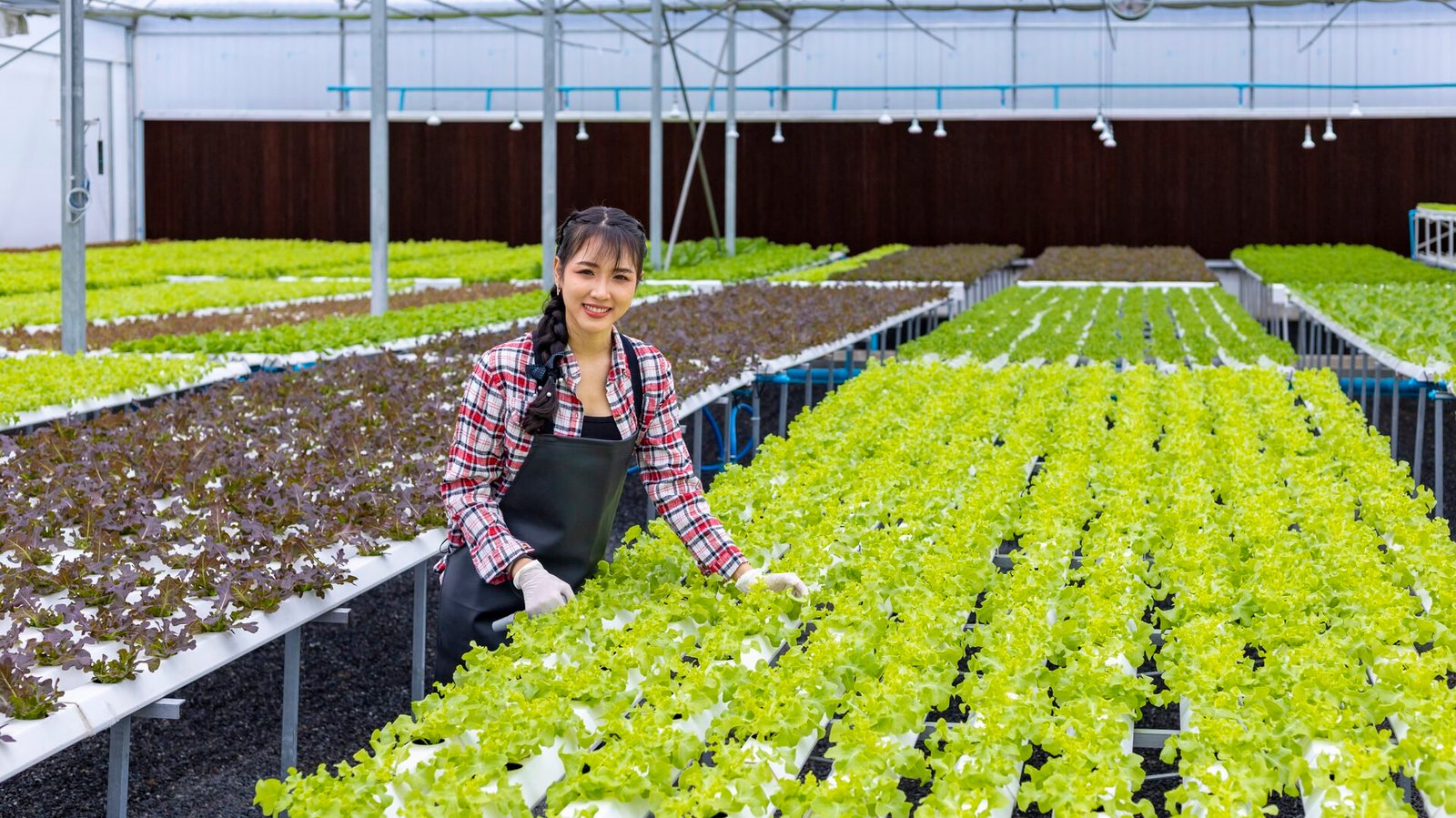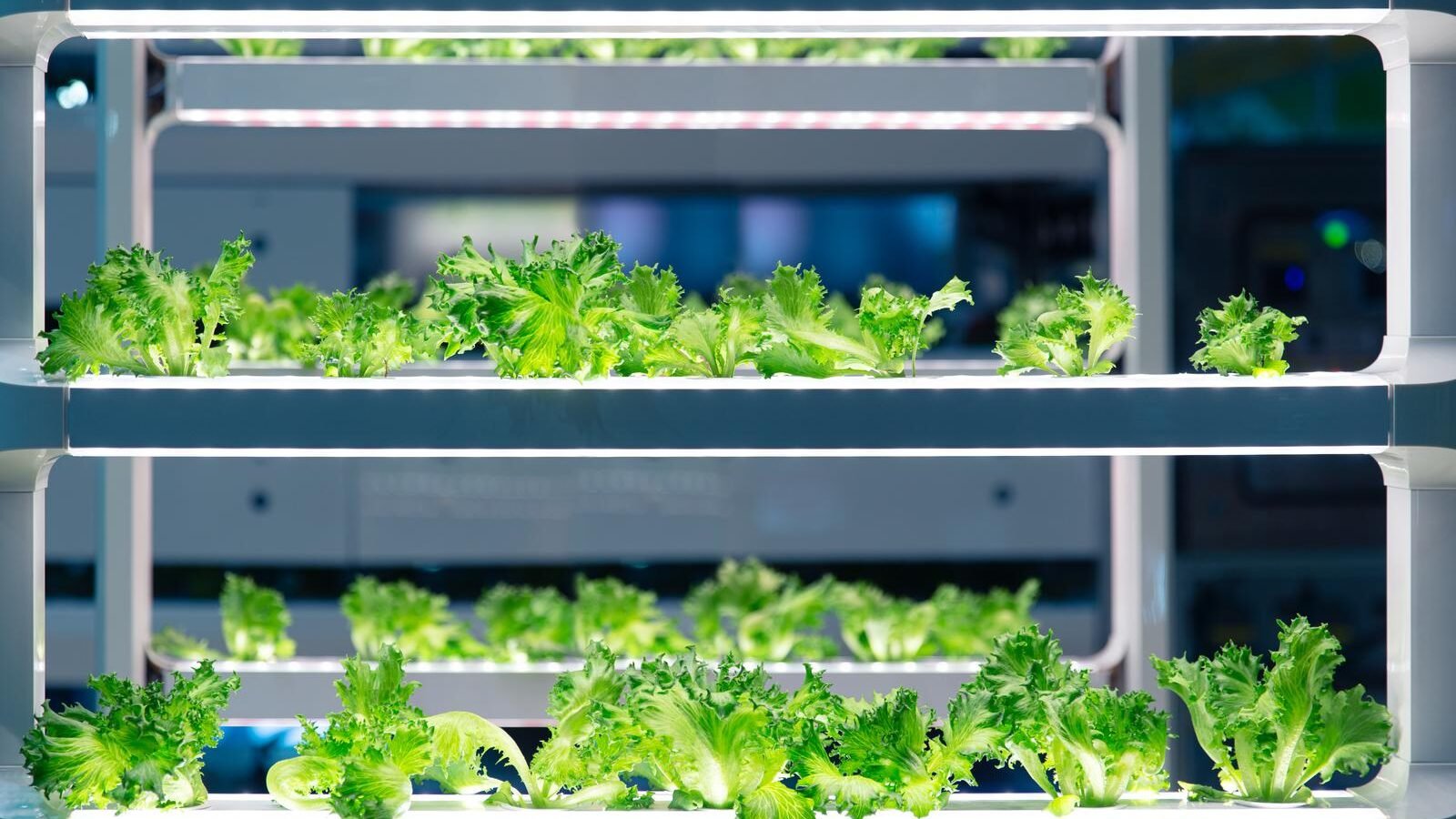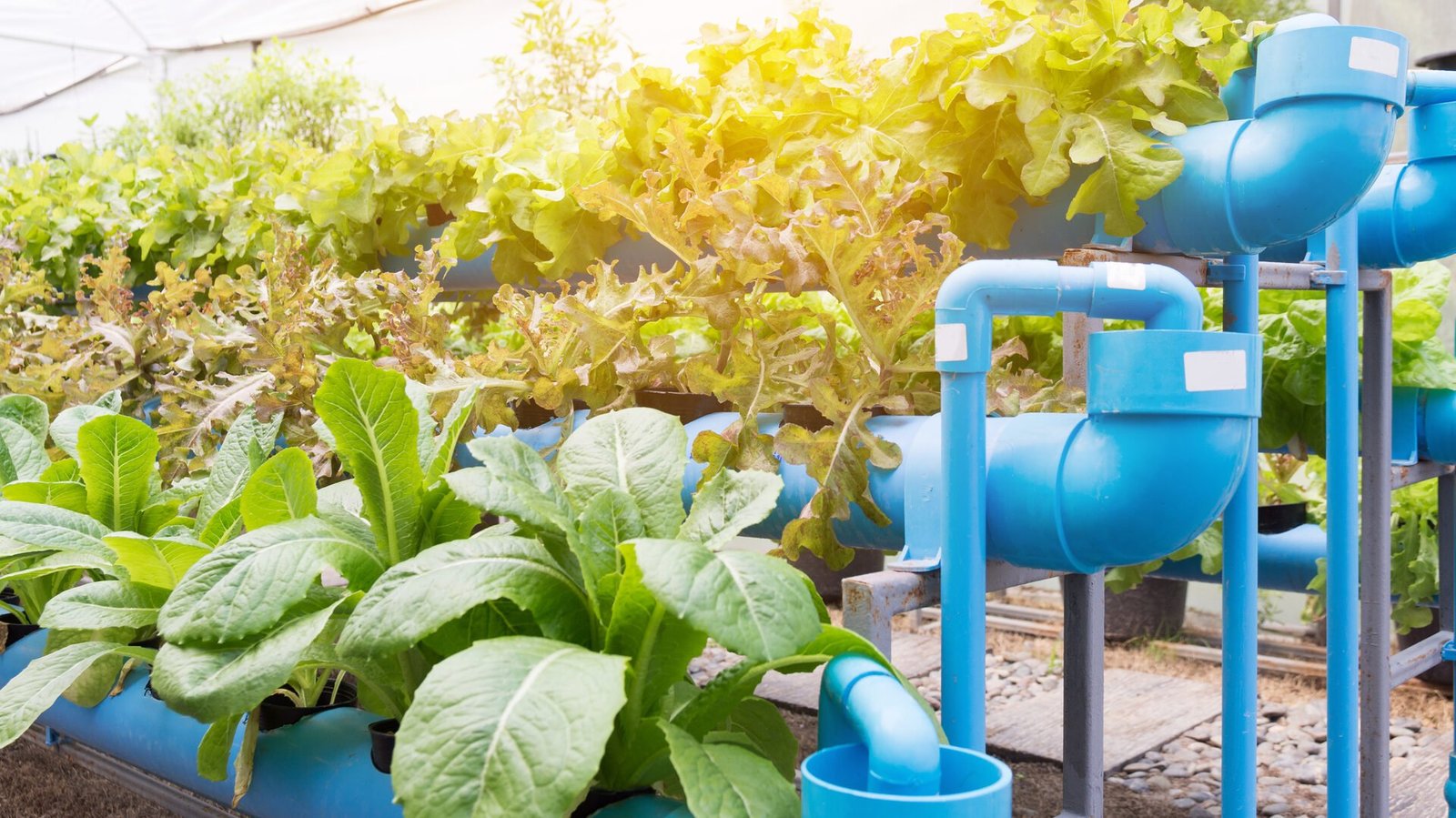Welcome to the world of hydroponics and aquaponics, where innovation and sustainability meet fresh produce. These systems offer numerous benefits, from maximizing space and water usage efficiency to reducing chemical usage and providing healthier, tastier plants.
In this article, we’ll explore the fundamentals of hydroponics and aquaponics, compare their advantages and differences, and offer tips and advice for getting started and achieving success. Whether you’re a beginner or an advanced grower, these systems can help you cultivate delicious and nutritious crops in an eco-friendly manner.
- What is Hydroponics?
- Advantages of Hydroponics
- What is Aquaponics?
- Benefits of Aquaponics
- Hydroponics vs. Aquaponics: A Comparison
- Getting Started With Hydroponics
- Getting Started with Aquaponics
- Tips for Success in Hydroponics and Aquaponics
- Frequently Asked Questions (FAQs) about Hydroponics and Aquaponics
What is Hydroponics?
Hydroponics is a method of growing plants without the use of soil. Instead, plants are grown in a nutrient-rich water solution that provides everything they need to thrive. This allows crops to grow faster and more efficiently than traditional soil-based methods.
The key components of a hydroponic system include the nutrient solution, growing medium, and water management system. The nutrient solution is the heart of the system and provides the necessary minerals and nutrients for plant growth. The growing medium serves as a support structure for the plants and helps to maintain proper moisture levels. Finally, water management is essential to ensuring that plants receive the correct amount of water and oxygen.
Hydroponic systems come in a variety of forms, including deep water culture, nutrient film technique, and drip irrigation. Each method has its own benefits and drawbacks depending on the type of crop being grown and the available space and resources.
Advantages of Hydroponics
Hydroponics is a highly efficient method of growing plants without soil and offering a variety of benefits that traditional soil-based farming cannot match.

| Advantage | Description |
|---|---|
| Faster Growth Rates | Plants in a hydroponic system grow up to 50% faster than those in soil-based systems due to the ease of nutrient absorption and the ability to control environmental factors. |
| Higher Yields | Hydroponic systems offer a more controlled and precise growing environment that enables plants to reach their full potential and produce higher yields than traditional farming methods. |
| Water Conservation | Hydroponic systems use up to 90% less water than soil-based systems while still producing the same amount of crops. This makes it a sustainable choice, especially in areas with water scarcity. |
| Space Efficiency | Hydroponics allows for the cultivation of plants in small or limited spaces such as rooftops, balconies, and even indoors. This makes it ideal for urban gardening and small-scale farming. |
The efficiency, sustainability, and scalability of hydroponic systems make them an attractive option for modern agriculture.
Advantages of Hydroponics – Recap
- Faster growth rates
- Higher yields
- Water conservation
- Space efficiency
What is Aquaponics?

Aquaponics is a sustainable and efficient system that combines hydroponics with aquaculture. It is a closed-loop system where fish waste provides nutrients for the plants, and the plants filter the water for the fish. In other words, it’s a self-contained ecosystem that allows for the growth of both fish and plants in a symbiotic relationship.
How does it work?
| Fish Tank | Grow Bed |
|---|---|
| The fish tank is where the fish live and produce waste. The waste contains ammonia, which is toxic to the fish and plants if left untreated. | The grow bed is where the plants grow. It is filled with a growing medium that supports the plants and provides a surface area for bacteria to break down the ammonia into nitrites and then into nitrates. |
| The water from the fish tank is pumped into the grow bed. | The plants take up the nitrates as nutrients and purify the water before it flows back into the fish tank. |
| This process repeats, creating a continuous cycle of nutrient-rich water for the plants and clean water for the fish. |
What plants can you grow in an aquaponic system?
You can grow a wide variety of plants in an aquaponic system, including lettuce, herbs, tomatoes, cucumbers, strawberries, and even flowers. However, some plants require more nutrients than others and may not thrive in an aquaponic system, so it’s important to do your research and choose plants that are well-suited for this type of system.
Benefits of Aquaponics
Aquaponics offers numerous benefits, including:
- Sustainable food production: Aquaponics produces fresh, nutrient-rich produce and fish year-round in a sustainable and eco-friendly way.
- Reduced water usage: Aquaponics uses up to 90% less water than traditional soil-based farming methods.
- Elimination of chemical fertilizers: By using fish waste as a natural fertilizer, aquaponics eliminates the need for chemical fertilizers that can harm the environment and human health.
- Potential for multiple harvests: Since aquaponics grows plants and fish at the same time, it offers the potential for multiple harvests and increased productivity.
AMAZON
Benefits of Aquaponics
Aquaponics is a sustainable and efficient method of food production, with numerous benefits for both the environment and consumers. Here are some of the top benefits:
| Benefits | Explanation |
|---|---|
| Sustainable food production | Aquaponics allows for the production of both fish and plants in a closed-loop system, reducing waste and producing fresh food year-round. |
| Reduced water usage | The water in an aquaponic system is recirculated, requiring less water overall than traditional agriculture. |
| Elimination of chemical fertilizers | The fish waste provides natural nutrients for the plants, eliminating the need for synthetic fertilizers that can harm the environment and human health. |
| Healthy and fresh produce | The plants grown in aquaponic systems are free from pesticides and herbicides, resulting in fresh and healthy produce for consumers. |
In addition to these benefits, aquaponics can also be used to provide educational opportunities and promote community engagement. By bringing people together around food production, aquaponics can foster a sense of connection and responsibility for the environment.

Hydroponics vs. Aquaponics: A Comparison
Both hydroponics and aquaponics are innovative systems for growing plants without soil, and they offer numerous benefits compared to traditional farming. However, while both systems share some similarities, there are also some key differences between them. In this section, we’ll take a closer look at the similarities and differences between hydroponics and aquaponics.
Similarities
One of the main similarities between hydroponics and aquaponics is that they both use a water-based system to deliver nutrients to plants. In hydroponics, the nutrient solution is specially formulated to provide all the essential nutrients for the plants to thrive. In aquaponics, the nutrient-rich water is created by the waste produced by fish, which is broken down by bacteria and turned into a food source for the plants.
Another important similarity between the two systems is that they both allow plants to grow faster and produce higher yields compared to traditional farming methods. Both hydroponics and aquaponics also use significantly less water compared to traditional farming methods, making them much more sustainable and environmentally friendly.

Differences
Despite their similarities, there are significant differences between hydroponics and aquaponics. One of the most important differences is that aquaponics includes a fish tank as part of the system. While hydroponics only requires a nutrient solution to nourish the plants, aquaponics also requires careful management of the fish to ensure they remain healthy and produce enough waste to give the plants the nutrients they need.
Another difference between the two systems is the type of nutrients used to feed the plants. In hydroponics, the nutrient solution is typically a mixture of minerals that provide everything the plants need to grow healthy and strong. In aquaponics, the nutrients come from fish waste and other organic matter, which is broken down by bacteria and turned into a form that the plants can absorb.
Finally, the setup and maintenance of the two systems also differ significantly. While hydroponics systems can be set up indoors or outdoors, aquaponics systems require a larger space and a carefully controlled environment to ensure the fish and plants remain healthy. Additionally, aquaponics systems require regular monitoring of water quality to ensure fish waste is being properly converted into nutrients for the plants.
Conclusion
Whether you choose hydroponics or aquaponics, you’ll be able to enjoy the many benefits of growing plants without soil, including faster growth rates, higher yields, and reduced water usage. However, it’s important to understand the differences between the two systems to choose the one that’s right for your needs and resources.
Getting Started With Hydroponics
Hydroponic systems can seem daunting, but getting started is easier than you might think. Here are some steps to guide you:
Choose Your Hydroponic System
The first step is choosing the type of hydroponic system you want to use. Some popular options include Deep Water Culture, Drip Irrigation, and Nutrient Film Technique. Choose a system that fits your budget and available space.
Select Your Plants
Hydroponics is versatile and can grow almost any plant, but some plants are better suited for hydroponic systems than others. Consider plants like lettuce, herbs, and strawberries, as they thrive in a hydroponic environment.
Set Up Your System
Follow the instructions that come with your hydroponic system to set up the equipment. This will usually involve setting up the nutrient reservoir, installing the pump, and placing the plants in their growing medium. Ensure that all parts of the system are functioning properly.
Manage Nutrient Solution
The nutrient solution is a crucial part of hydroponics as it provides the plants with the nutrients they need to grow. Make sure to monitor and adjust the nutrient solution to ensure your plants are getting the correct balance of nutrients.
Maintain Your System
Hydroponic systems require regular maintenance to ensure they continue to function properly. Monitor water levels, pH levels, and check for any signs of pest or disease. Regularly clean and disinfect your hydroponic system to prevent algae growth and clogs.
Hydroponics is a great way to grow fresh produce in a sustainable and efficient way. With the right set up and maintenance, you can be harvesting your own crops in no time.
Getting Started with Aquaponics
If you’re interested in sustainable food production and want to take your gardening skills to the next level, aquaponics might be the perfect solution. By combining hydroponics and aquaculture, you can create a thriving system where fish and plants grow in harmony. Here are some tips to get started.
Step 1: Choose a Location
The first step is to choose a suitable location for your aquaponic system. It should be an area that receives enough natural light, has access to electricity and water, and is sheltered from extreme temperatures and weather conditions. You can choose to build an indoor or outdoor system depending on your preference and availability of space.
Step 2: Select Fish and Plants
The next step is to choose the fish species and plants that are suitable for your aquaponic system. Some popular choices for fish include tilapia, catfish, and trout, while plants like lettuce, herbs, and tomatoes grow well in aquaponics. Make sure to select species that are compatible with each other and can thrive in the same environment.
Step 3: Set Up the System
Once you have chosen your location, fish and plants, it’s time to set up your aquaponic system. You’ll need a fish tank, growing bed, pump, and piping system to circulate water between the two components. You can build your own system from scratch or purchase a pre-made kit that fits your needs.
Step 4: Maintain the System
Once your system is up and running, it’s important to maintain it regularly to ensure optimal growth and health for your fish and plants. You’ll need to monitor the pH levels, nutrient balance, and water quality to prevent any issues such as algae growth or bacterial infections. Regular cleaning and maintenance will also keep your system running smoothly.
By following these steps, you can easily set up an aquaponic system and start enjoying fresh and sustainable produce right at home. Remember to do your research and seek advice from experienced growers to ensure success!
Tips for Success in Hydroponics and Aquaponics
Hydroponics and aquaponics offer sustainable and efficient ways to grow fresh produce at home. Here are some advanced tips and techniques to help you maximize success in your hydroponic or aquaponic system:
1. pH Management
Paying attention to your system’s pH levels is crucial for healthy plant growth. In hydroponics, maintain a pH range of 5.5-6.5, while aquaponics typically requires a pH range of 6.8-7.2. Monitor your pH levels regularly and adjust accordingly using pH up or pH down solutions.
2. Lighting
Providing adequate lighting for your plants is essential, especially in indoor hydroponic and aquaponic systems. Use high-quality LED grow lights and adjust their height according to the growth stage of your plants. Aim for a minimum of 12-14 hours of light per day.
3. Temperature Control
Maintaining a consistent temperature is crucial for healthy plant growth. In hydroponics, aim for a temperature range of 65-80 degrees Fahrenheit, while aquaponics requires a slightly cooler range of 72-78 degrees. Consider using a heater or chiller to keep your system within the ideal temperature range.
4. Pest Prevention
Pests can be a common issue in hydroponics and aquaponics, but there are several preventative measures you can take. Implement a strict hygiene routine, regularly inspect your plants for signs of pest infestations, and consider using natural pest control methods such as neem oil or ladybugs.
By implementing these tips and techniques, you can ensure your hydroponic or aquaponic system thrives and provides you with fresh, sustainable produce all year round.
Frequently Asked Questions (FAQs) about Hydroponics and Aquaponics
If you’re new to hydroponics and aquaponics, you likely have questions about how these systems work and how to get started. Here are some common FAQs and their answers:
What is the difference between hydroponics and aquaponics?
Hydroponics is the process of growing plants without soil, using nutrient-rich water instead. Aquaponics combines hydroponics with aquaculture, where fish waste provides nutrients for the plants.
What are the benefits of hydroponics and aquaponics?
These systems offer numerous benefits, including higher yields, sustainable food production, reduced water usage, and the ability to grow plants in limited spaces.
What plants can be grown in hydroponic and aquaponic systems?
Almost any plant can be grown in hydroponic and aquaponic systems, including vegetables, herbs, and even fruits.
How do I choose the right setup for my hydroponic or aquaponic system?
Consider factors such as your available space, budget, and the types of plants or fish you want to grow. Research different setups and speak with experts to determine which one is best for you.
How do I maintain the nutrient levels in my hydroponic or aquaponic system?
You’ll need to regularly check and adjust the pH levels of your nutrient solution or fish tank water. You can also add nutrients as needed, either through commercial products or homemade solutions.
What kind of lighting should I use for my hydroponic or aquaponic system?
Plants need different spectrums of light for growth, so it’s important to use the right type and intensity of lighting. LED grow lights are popular for their energy efficiency and ability to mimic natural sunlight.
How do I prevent pests in my hydroponic or aquaponic system?
Regularly check your plants for signs of pests and use natural or chemical remedies as needed. You can also prevent pests by maintaining proper nutrient levels and cleanliness in your system.
Are hydroponics and aquaponics sustainable?
Yes! These systems require less water, eliminate chemical fertilizers, and can be used to grow food locally, reducing transportation emissions and costs.
For more information and resources on hydroponics and aquaponics, check out our additional articles and guides.

























